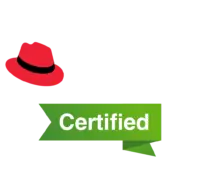
Overview
This course introduces participants to automating core system administration tasks on Microsoft Windows Server using Ansible. Designed for system administrators, DevOps engineers, and developers, attendees will learn to deploy and manage Windows servers and applications efficiently with Ansible. The curriculum covers writing Ansible Playbooks, managing them with version control systems, and executing them through Ansible’s automation controller. By the end of the course, participants will be equipped to enhance consistency, reduce manual errors, and accelerate administrative tasks across Windows environments.

Objectives
By the end of this course, leaner will be able to:
- Develop Ansible Playbooks to automate tasks on Windows servers.
- Manage Playbooks using Git-based version control systems.
- Execute Playbooks via Ansible’s automation controller web interface.
- Ensure software installations and Windows features are current using Ansible automation.
- Optimize Playbooks with loops, conditional tests, and handlers.
- Implement error recovery mechanisms within Playbooks.
- Deploy and manage files on Windows servers using Jinja2 templates.
- Administer local and domain users, manage Active Directory domains, and generate dynamic inventories based on domain membership.
- Automate common Windows Server administrative tasks.
- Reuse existing automation code through Ansible Content Collections, Roles, and integration with PowerShell Desired State Configuration (DSC) resources.

Prerequisites
- Basic understanding of Windows Server administration.
- No prior experience with Ansible or Linux is required.

Course Outline
- Fundamental concepts of Ansible.
- Installation of development tools from Ansible Automation Platform.
- Setting up Windows servers for Ansible automation.
- Configuring the automation controller to manage Windows hosts.
- Crafting Playbooks to automate tasks on multiple Windows hosts.
- Running Playbooks using the automation controller.
- Utilizing variables to simplify Playbook management.
- Gathering and using facts about managed hosts.
- Automating the installation and updating of software on Windows servers.
- Implementing loops, conditional tests, and handlers in Playbooks.
- Designing Playbooks to recover from task failures.
- Deploying, modifying, and managing files on Windows servers.
- Using Jinja2 templates for dynamic file content.
- Organizing Playbooks for larger projects.
- Incorporating existing automation code through Roles and Ansible Content Collections.
- Managing local and domain users.
- Administering Active Directory domains.
- Generating dynamic inventories based on domain membership.
- Automating routine Windows Server administrative tasks.
- Reinforcing key concepts and skills covered throughout the course.


 Projects
Projects Assignments
Assignments









